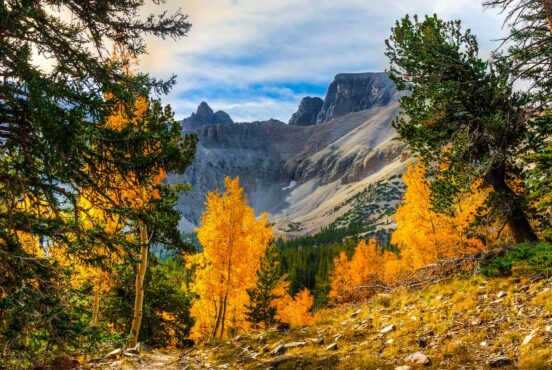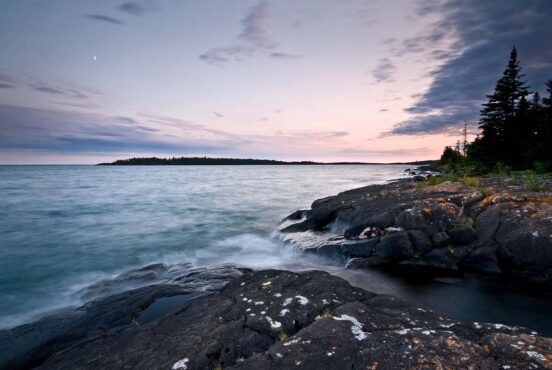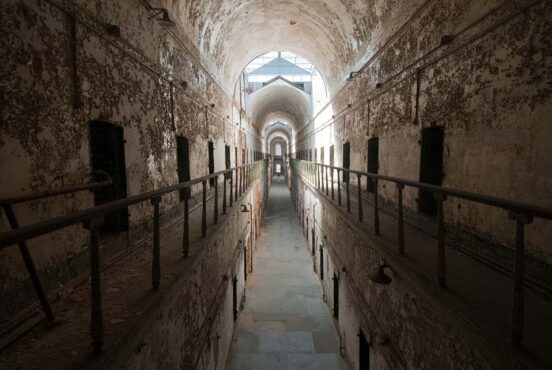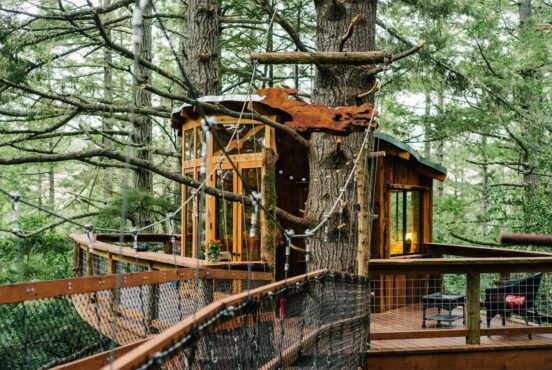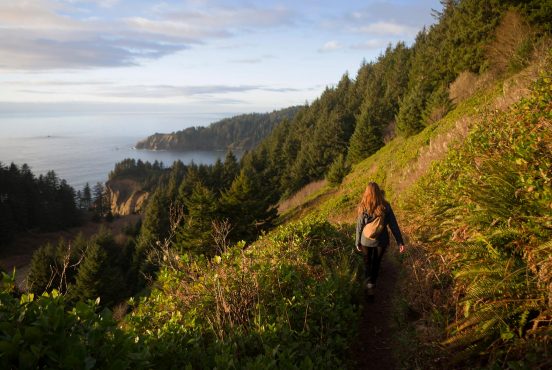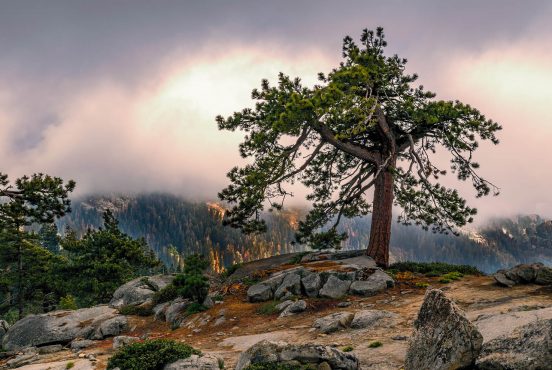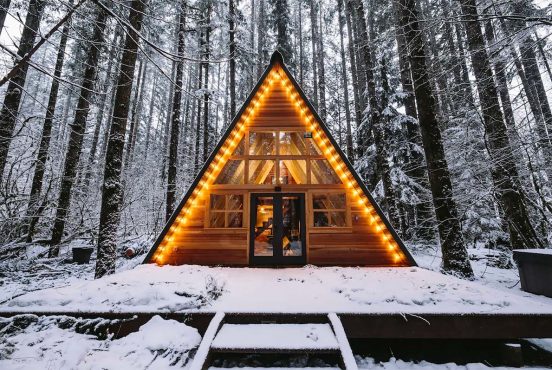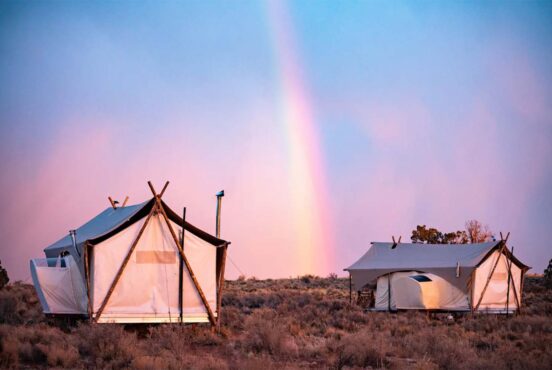Overwhelmed with options? This tour of Yellowstone essentials hits geyser basins, wildlife-packed valleys, and the park’s most impressive waterfalls.
America’s first national park is the stuff of legends: Bubbling mud, boiling geysers, and enormous waterfalls share space with soaring mountains, high-elevation lakes, and vast river valleys. Here, grizzly and black bears, bison, wolves, elk, and eagles inhabit one of the largest nearly intact temperate-zone ecosystems in the world. More than 900 miles of trails crisscross an area larger than Delaware and Rhode Island combined.
There’s simply no other place on Earth quite like it, and folks drive from all over the country to witness the spectacle.
Let’s get one thing straight: You couldn’t see all of Yellowstone even if you spent weeks in the park. So, rather than running yourself ragged trying to visit every last attraction, it’s best to choose a few key destinations to explore. Consider this your first-timer’s guide to Yellowstone National Park: This tour will treat you to some of its marquee stops without too much car time — and we’ve broken it down for you hour-by-hour.
This tour assumes you’ll be visiting during the warmer months (a winter Yellowstone visit is a separate gem) and starting at the park’s West Entrance, just outside the town of West Yellowstone, Montana. Yellowstone’s main driving corridor forms a figure eight inside the park; each day of this two-day itinerary will focus on one of its two loops.
Note: Take these times with a grain of salt. Driving times can vary quite a bit at Yellowstone, where roadside wildlife sightings often cause slowdowns (aka “bison jams” or “bear jams”).

DAY 1 in Yellowstone National Park: The Lower Loop
7 a.m. Fill up on coffee at Mountain Mama’s Café in West Yellowstone and hit the road early—there’s lots to see today. The day begins with wide views over the Madison River as you drive east.
7:45 a.m. Consider Fountain Paint Pots a warm-up for the hydrothermal areas to come. Walk the boardwalk around this lesser-traveled thermal area to see multicolored mud pots and simmering hot springs.
8:30 a.m. Next stop: the awe-inspiring hues of Grand Prismatic Spring in Midway Geyser Basin. There’s a boardwalk leading right to its edge, but the best views come on the 1.2-mile (round trip) Grand Prismatic Overlook Trail. Park at the Fairy Falls Trailhead and hike to an aerial vista over this impossibly big, impossibly bright pool.
9:30 a.m. Arrive in Upper Geyser Basin, home to the world’s highest concentration of geysers—including Old Faithful. First off, check what time Old Faithful is next predicted to erupt (available at Old Faithful Inn and the visitor center), and plan your explorations around that. Besides watching the world’s most famous geyser go off, make sure to stroll the boardwalk past a number of other spouters and springs. Don’t miss a stop at Old Faithful Visitor Education Center, more like a geology museum than a visitor center, and make sure to pop in to the Yellowstone Tribal Heritage Center, which honors Indigenous artists from the 27 tribes associated with this land.
12 p.m. Take a lunch break in the Old Faithful Inn Dining Room, where you’ll tuck into a buffet surrounded by the inn’s unique timber-and-stone architecture. This striking inn has been welcoming visitors since 1904.
2:15 p.m. Press eastward, over Craig Pass and along the western shore of Yellowstone Lake, to Lake Village. Park at the grand Lake Hotel (well worth a peek inside) and explore the footpaths leading to beautiful stretches of lakeshore near Lake Lodge Cabins. Tip: Lake General Store scoops ice cream.
3:45 p.m. Turn north and cruise through Hayden Valley, a wide, grassy expanse surrounding the Yellowstone River. This is a great spot to see wildlife like bison and bears.
4:15 p.m. Arrive at Canyon Village and stop in to the excellent Canyon Visitor Education Center to learn more about this dramatic area before seeing it for yourself.
5 p.m. Backtrack slightly to explore the South Rim of the Grand Canyon of the Yellowstone, the gorgeous gorge containing 109-foot Upper Falls and 308-foot Lower Falls—both hugely impressive cascades. Drive to Artist Point to get the view immortalized by 19th-century artist Thomas Moran, then hike along the South Rim Trail for a bit for an ever-changing perspective over the canyon.
6:30 p.m. Head back to Canyon Village for dinner at the cafeteria-style Canyon Lodge Eatery. Then turn in early at either Canyon Campground or Canyon Lodge & Cabins.

Day 2 in Yellowstone National Park: The Upper Loop
An hour before sunrise: Start driving north. This morning is all about wildlife watching, and your best chances of spotting animals come at dawn.
A half-hour before sunrise: Turn east into the Lamar Valley. The park’s most famous wolf packs reside here, as do bison, elk, grizzly bears, coyote, and badgers. Keep your eyes peeled as you drive deeper into the valley—several cars pulled over and/or people standing with spotting scopes are a great clue that something wild is out there. How far you drive and how long you stay at each viewing point is up to you. Good luck!
8:30 a.m. Turn around, then grab a proper breakfast at the rustic Roosevelt Lodge Dining Room.
10 a.m. Continue your westward path to Mammoth Hot Springs. These sculpted travertine terraces are continually changing as the groundwater brings dissolved minerals to the surface, building still more layers. Explore the boardwalk that winds among the lower terraces and walk or drive the short loop around the upper terraces (don’t forget to look out for bison and elk in this area, too). Then stop by the Albright Visitor Center to learn more about the park’s flora and fauna.
12 p.m. Mammoth represents the last chance for an in-park restaurant on this route, so snap up a quick lunch at the casual Mammoth Terrace Grill.
12:45 p.m. One more leg of the Upper Loop to go. Turn south out of Mammoth and you’ll soon be following the Gardner River.
1 p.m. Obsidian Cliff, a black volcanic rock slope where ancient tribes quarried the stone for tools, is a worthy roadside pulloff. Humans first began taking obsidian from this cliff 11,000 years ago, and bits of it have been found along trade routes from Canada to the Ohio River Valley.
1:30 p.m. Arrive at Norris Geyser Basin, the oldest, hottest hydrothermal area at Yellowstone. Two loop trails wind through this unearthly zone, granting an up-close look at geysers, fumaroles, and hot springs—and they’re both worth doing. The trail through Porcelain Basin is .75 mile, and the one at Back Basin is 1.5 miles. Before you hike into the midst, stop at the small Norris Geyser Basin Museum for a primer on the science of hydrothermals.
4 p.m. If you haven’t run out of steam yet, head over to Artist Paintpots and stroll the 1-mile loop through a small but colorful hydrothermal area dotted with mudpots and hot springs.
4:45 p.m. One last stop: Pull over at Gibbon Falls to watch this 84-foot waterfall pour over the lip of the Yellowstone Caldera.
5:30 p.m. Pat yourself on the back for a day well lived, and sit down to a well-earned dinner in West Yellowstone. Madison Crossing Lounge is the nicest spot in town; if you’re looking for something a little more casual, Firehole BBQ Co. is your best bet.
Find Your Next Adventure
Get epic travel ideas delivered to your inbox with Weekend Wanderer, our newsletter inspiring thousands of readers every week.
Seen in: National Parks, Travel, West, Wyoming, Yellowstone




